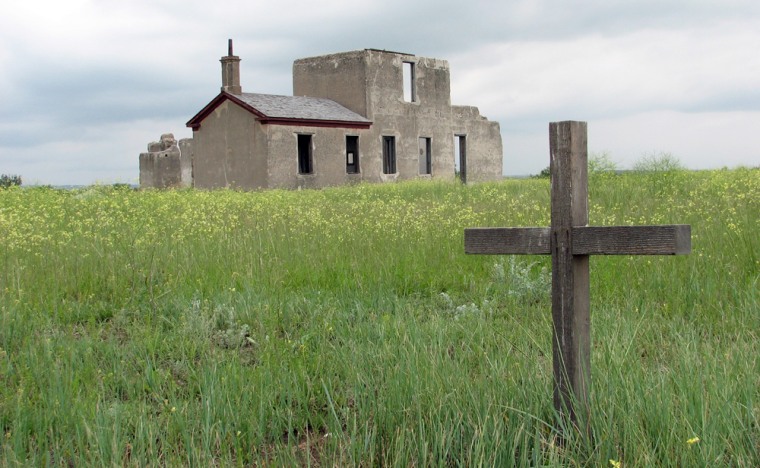The frontiersmen who built this outpost in 1834 picked a spot they hoped would enable them to dominate the regional buffalo-hide trade: a valley where two rivers run together and the Great Plains meet the Rocky Mountains.
It was a remote place — the first permanent settlement in what would become the state of Wyoming, in fact.
But as the real-estate adage goes, location was everything. It didn't take long for Fort William to outgrow its simple cottonwood palisade as it blossomed into a trade center and important station on the Oregon Trail.
The Army purchased the post in 1849 and gave it a new name. Fort Laramie became the largest military post on the Northern Plains and a staging area for a series of bloody conflicts between American Indian tribes and the expanding United States.
Now a National Historic Site run by the National Park Service, Fort Laramie will host a symposium June 19-21 to commemorate the 175th anniversary of the founding of Fort William.
The weekend will include presentations by experts of the western fur trade and a re-creation of a trappers camp like the one founder William Sublette pitched at the confluence of the North Platte and Laramie rivers on May 30, 1834.
"We're celebrating that era of the fur trade," said Mitzi Frank, superintendent of the site. "The reason that's so important to us here is mostly we are associated with the military history. But Fort Laramie actually started as a fur trade post."
The Historic Site sits on 832 acres in the undulating, agricultural hills of eastern Wyoming, which are bursting with green at this time of year. Located about 75 miles northeast of Cheyenne and about 25 miles off Interstate 25, it's a popular stop for travelers heading northwest to points like Yellowstone National Park.
The Park Service keeps the remnants of old Fort Laramie in varying degrees of repair. A number of the buildings, such as officers' homes, cavalry barracks, an enlisted men's bar and a bakery, are fully restored and outfitted with the furniture and equipment that would have been used during the fort's heyday of the mid- to late-1800s.
Other buildings on the site are maintained as ruins, including the post hospital and various living quarters.
It was on these grounds that the American government hosted numerous treaty negotiations with Plains Indian tribes.
The most famous of those was the still-disputed Treaty of 1868, an attempt to bring peace by restricting white access to the Black Hills of Dakota and making the area part of the Sioux Reservation. The American government broke the treaty within six years and a war ensued, including the annihilation of Lt. Col. George Armstrong Custer's Army detachment at the Battle of Little Bighorn.
One building you won't find on the grounds is the original Fort William. It was replaced by a bigger, stronger adobe post only a few years after its construction.
Park Ranger Steve Fullmer said the beaver fur trade was already in decline when Sublette and his partner Robert Campbell constructed Fort William.
The entrepreneurs realized the next big industry would be buffalo robes. The robes, or high-quality, tanned hides, were in demand on the East Coast and in Europe for use as bedding, floor covering and winter coats. But the robes were heavy, making it too difficult for an individual trapper to go out and collect them himself.
"It was much more efficient to become traders and trade with the Native Americans for buffalo robes," Fullmer said. "Native Americans would go out and kill the buffalo, process the robes, bring them into the fort and trade for various trade goods. ... By in large it was something looked at very favorably by the tribes, and vice versa."
Archeologists have searched off and on for the exact site of the old Fort William, where the two cultures befriended one another for trade purposes 175 years ago.
As part of the fort's anniversary symposium, Danny Walker will give a presentation on efforts to find the original fort.
Walker, Wyoming assistant state archaeologist, said the search is complicated because the original fort was made of cottonwood trees, a soft wood that rots quickly.
"And if it rotted enough, really you wouldn't have anything left except for the construction trench that the logs would have been placed into," he said.
Walker believes new buildings were constructed on top of the original Fort William more than once, first its replacement and then military houses.
"We're not giving up on it yet," he said. "As we figure out new ideas or specific project funding becomes available, we'll be out trying to do something else."
